
echinopsis yuquina // Image - Wikimedia / Stan Shebs
The echinopsis They are one of those cacti that, although most are relatively small, all produce flowers that anyone can gape with. And they are usually large, with such beautiful colors that when you realize that they remain open for more than a few hours ... you don't have time to pick up your mobile and take a picture of them 😉.
Well, maybe I have exaggerated a bit. But if you like these plants, and / or you love to see cheerful petals, surely you understand why I said that. As if that wasn't enough the care they require is quite simple.
Origin and characteristics
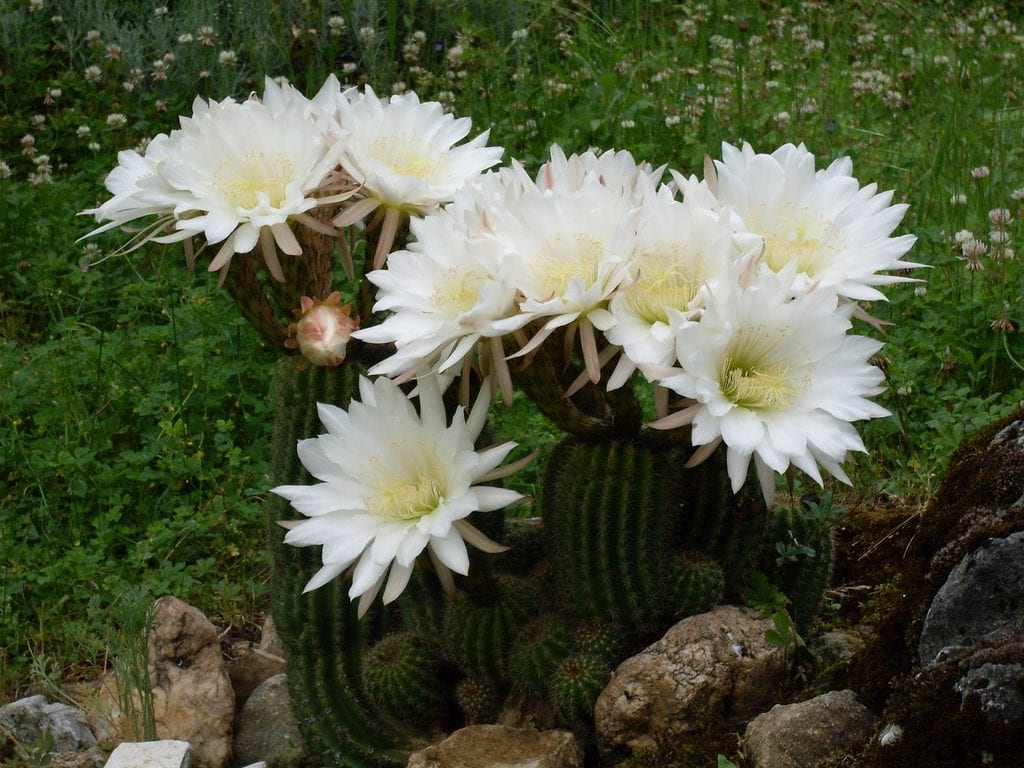
Echinopsis schickendantzii // Image - Wikimedia / uleli
The genus of plants in question can boast of being one of the largest of the cacti: in it about 150 species are included, all of them native to South America, specifically from Argentina, Chile, Bolivia, Peru, Brazil, Ecuador, Paraguay and Uruguay. It was described by Joseph Gerhard Zuccarini and published in Abhandlungen from the Mathematisch-Physikalischen Classe from the Königlich Bayerischen Akademie der Wissenschaften 1837 the year.
They are characterized by having heights between 20cm and 10 meters, and shapes that vary from species to species: some are rounded, others columnar, and there are others that are hanging or creeping. Its stems are usually armed with thorns, usually short but can be more or less long as in the Echinopsis terscheckii for instance. Y its flowers are generally large and showy, nocturnal and very aromatic.
Main species
The most popular are:
Echinopsis pachanoi

Known as the San Pedro cactus, it is a columnar cactus that, as it grows, branches out from the base. Native to the Andes, it reaches a height of 3 to 7 meters. Its stems are cylindrical, dark green, formed by 5 to 14 broad ribs and whitish areoles. Its spines, sometimes absent, are 0,5 to 2cm long. It produces aromatic and nocturnal flowers near the apex of the stem, they are 19 to 24cm long by 3-4cm in diameter, white in color.
Echinopsis subdenudata
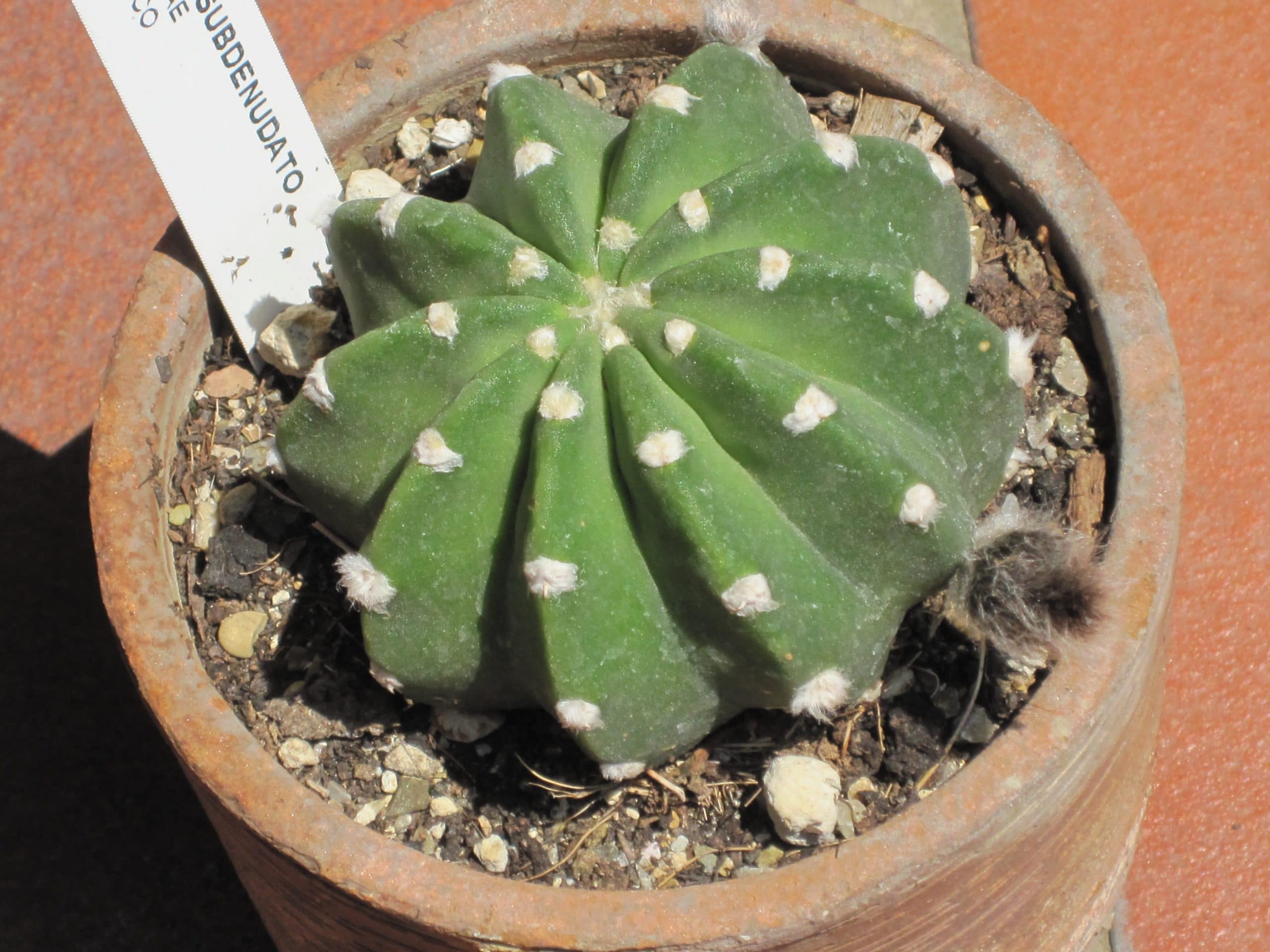
Image - Wikimedia / Petar43
It's a globular cactus endemic to Tarija in Bolivia and Paraguay. It measures about 20cm in diameter and about 5-6cm in height. Its stem is dark green, and is composed of 8 or more very well defined ribs that have woolly areoles without spines. The flowers are white, aromatic, and nocturnal, with a size of about 5-7cm in diameter.
Peruvian Echinopsis
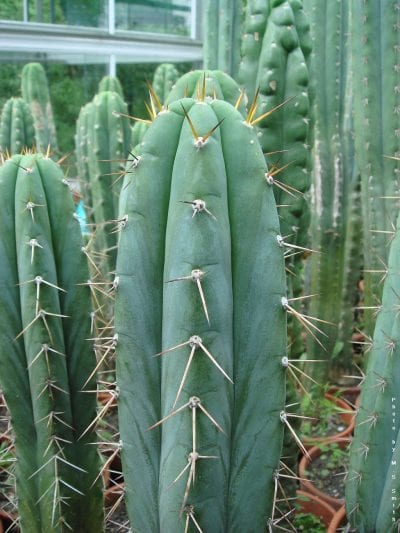
Image - Wikimedia / msscacti
It is a cactus native to the Peruvian Andes, which grows as a highly branched shrub from the base. It reaches a height of 3-6 meters, with bluish-green cylindrical stems measuring 8-18cm in diameter, composed of 6-8 wide ribs. The areolas are whitish, from which 3-7 grayish radial spines sprout. The flowers, which sprout from the apex of the stems, are white, aromatic and have a nocturnal habit.
Echinopsis oxygona / Echinopsis multiplex
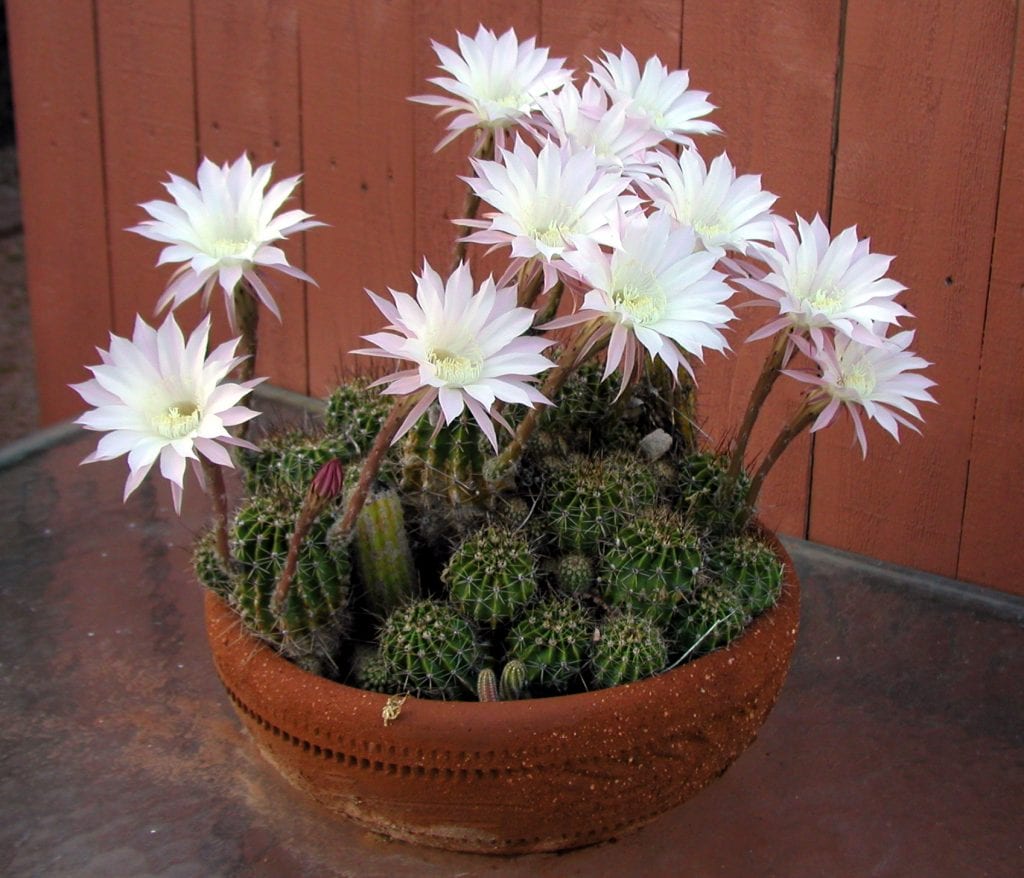
Image - Wikimedia / Alan Levine from United States
This species of cactus is endemic to Argentina, Paraguay, Bolivia and Uruguay. Its stems are spherical, 5 to 25cm in diameter and green. It is composed of between 8 and 14 rounded ribs, which have whitish areoles from which 5 central spines of up to 3 cm long and 3 to 15 radial spines of up to 2,5 cm long sprout. The flowers are white, light pink or lavender, sprouting at night from stems up to 22cm long.
Echinopsis chamacereus
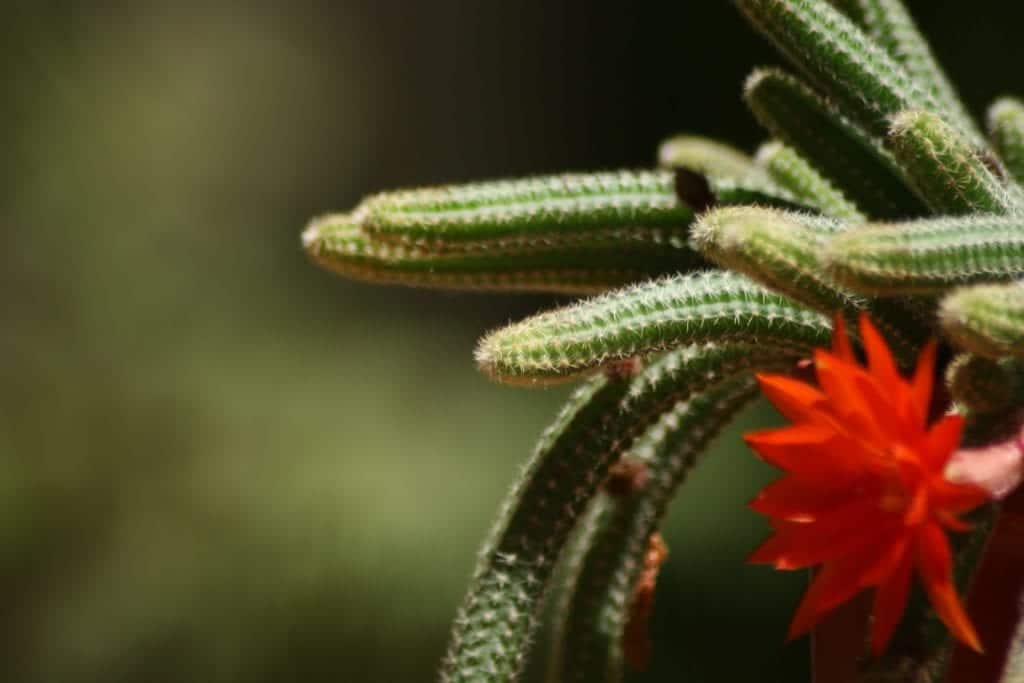
Image - Wikimedia / Gonzalodutto
This it is a hanging or creeping cactus -depending on where it grows- endemic to Tucumán (Argentina). Its stems are more or less cylindrical, with a somewhat narrower tip, composed of 8-10 ribs with multiple areoles from which 10-15 white spines 1 to 1,5mm long sprout. The flowers are red, and measure 4cm in diameter.
What is the care of Echinopsis?
If you want to have one or more copies, we recommend you take care of them as follows:
Location
They are plants that have to be outside, in full sun. But beware, if they had them in semi-shadow or protected from the star king you have to get used to them little by little to the sun's rays to avoid burning.
Earth
- Flower pot- Use sandy substrates, such as pumice or akadama. Another option is to mix black peat with perlite in equal parts.
- Garden: the land must have excellent drainage, as they do not like waterlogging. In case the one you have is not like that, make a large planting hole, about 50 x 50cm, cover the sides with shading mesh, and then fill it with the substrate mentioned above.
Irrigation
Must be rather scarce. During the summer water an average of 1 time a week, and the rest of the year every 7-10 days. In winter, if frost occurs, water once a month.
Subscriber
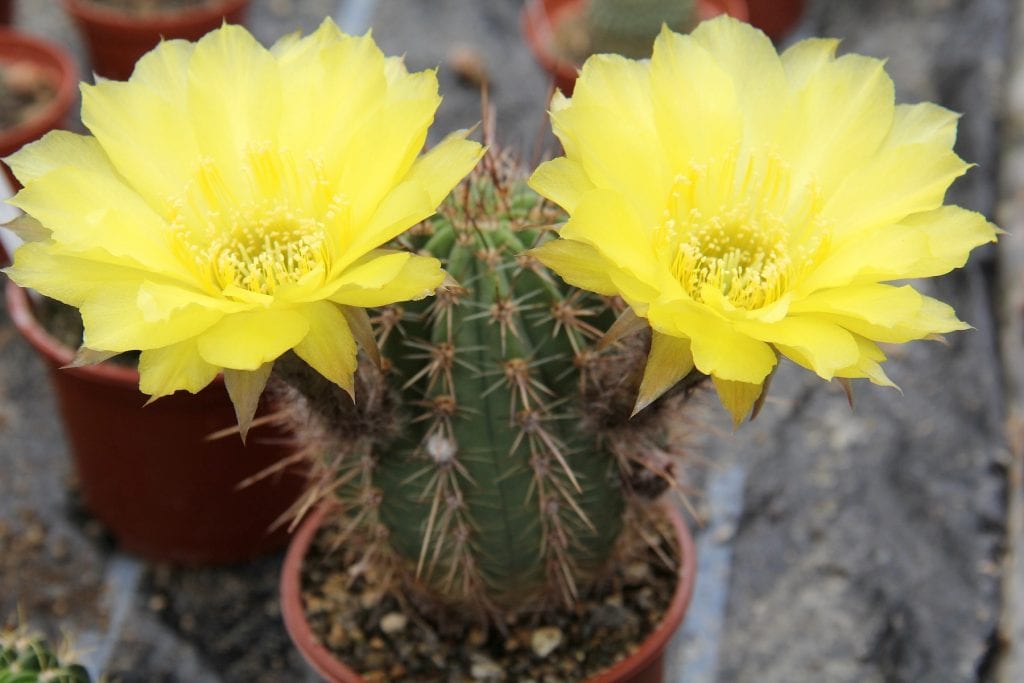
Echinopsis haematantha // Image - Wikimedia / Peter A. Mansfeld
In spring and summer they will appreciate a contribution of regular fertilizer. Use specific liquid fertilizers for cacti following the instructions specified on the package.
Multiplication
The Echinopsis multiply by seeds, and some by stem cuttings, in spring and early summer. Let's see how to proceed in each case:
Seeds
- The first thing to do is fill a pot with universal growing medium mixed with perlite.
- Afterwards, we water conscientiously.
- Then, we place the seeds on the surface of the substrate.
- Next, we cover them with a thin layer of previously washed river sand, or another similar type of sand -as long as it is volcanic, such as the pomx for example-.
- Finally, we spray / spray the surface with water, and put the pot outside, in semi-shade.
Keeping the substrate moist - not waterlogged - they will germinate in about 2 weeks.
Cuttings
To multiply them by cuttings, what you have to do is cut a piece of at least 10cm with a knife that we will have previously disinfected with pharmacy alcohol, let the wound dry for a week, and then plant it in a pot with substrates sandy. In this way, it will emit its own roots in about 3-4 weeks.
Planting or transplanting time
Whether you want to plant in the garden or move to a larger pot, you have to do it in spring, when the risk of frost has passed.
Plagues and diseases
Echinopsis are very resistant plants, but you have to watch the snails y control the risks to avoid problems.
Rusticity
It depends a lot on the species, but in general They can be grown all year round outdoors if the temperature does not drop below 0º. There are some that resist weak frosts (down to -3ºC), such as E.pachanoi, And. sub-debt or E. terscheckii, which are planted in climates such as the warm Mediterranean or in the Canary Islands.
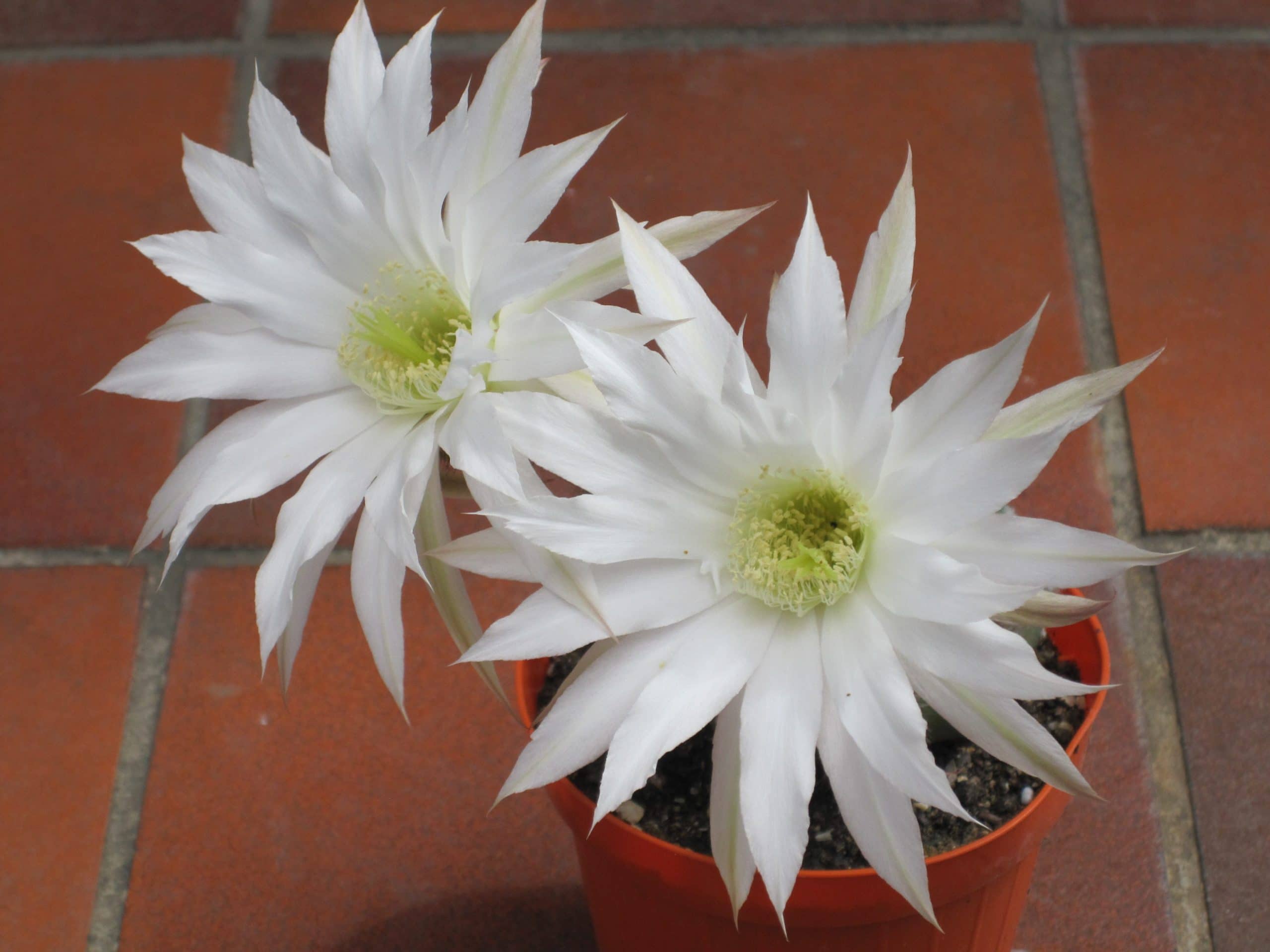
What do you think of these cacti? You like them?
I have a few dozen cacti / succulents but I don't know how to fertilize them. Any ideas please. I am in Quito, Ecuador 2800 meters above sea level. Equatorial Andean city climate. Temp. between 8 and 25 degrees during most of the year.
Hi Richard.
Here you have information about the subscriber.
A greeting.
Hello. I live in the city of Buenos Aires, Argentina. On a balcony facing the Southwest I have several Echinopsis subdenudata that constantly have suckers. I never cut a cutting but one of them, for example in a period of 4 years, filled the pot with 10 children. Another, barely 3 cm in diameter, in 5 months had generated a kind of hump that gradually separated until it formed a sucker. Others are born from the base, always attached to the main body. The flowers are beautiful and force me to be awake from 10 pm. until 3 am. approximately until they open, usually 3 or 4 together. Unfortunately at 10/11 am they start to close. I have never scented any aroma.
I would like to know if there are specimens with red flowers. Thanks since now.
Hello Rosario.
The Echinopsis subdenudata they only give white flowers, but the Echinopsis chamacereus for example it gives them red 🙂
Greetings.
Very nice cacti, Thanks for the info.
We are glad you like them 🙂
Hola!
What do we do with the flowers once they wither? fall alone? do we have to remove them?
Thank you!
Hello Veronica.
You can remove them, but they end up falling on their own 🙂
Greetings.